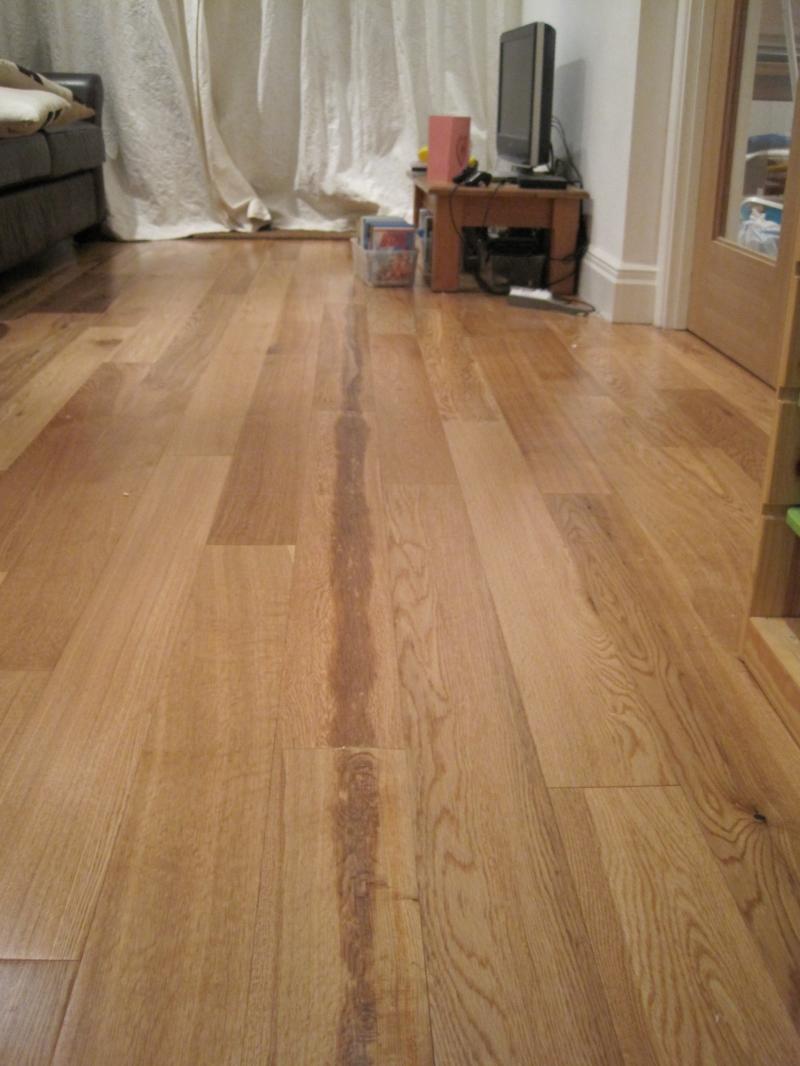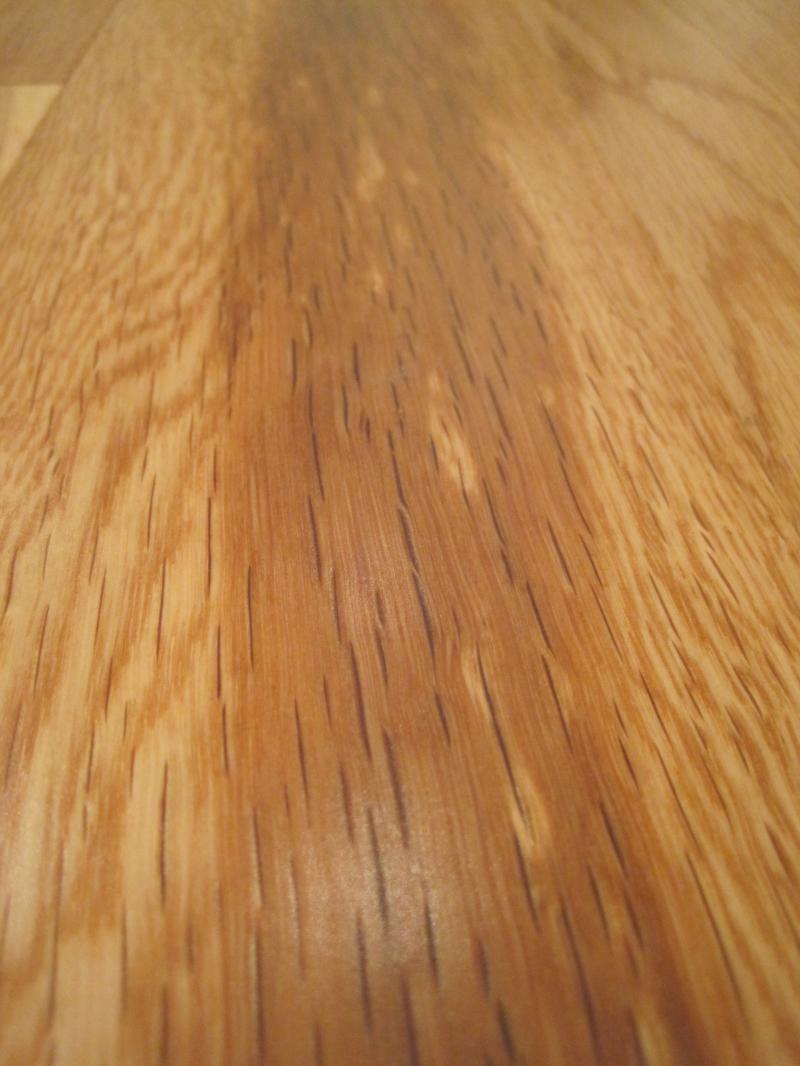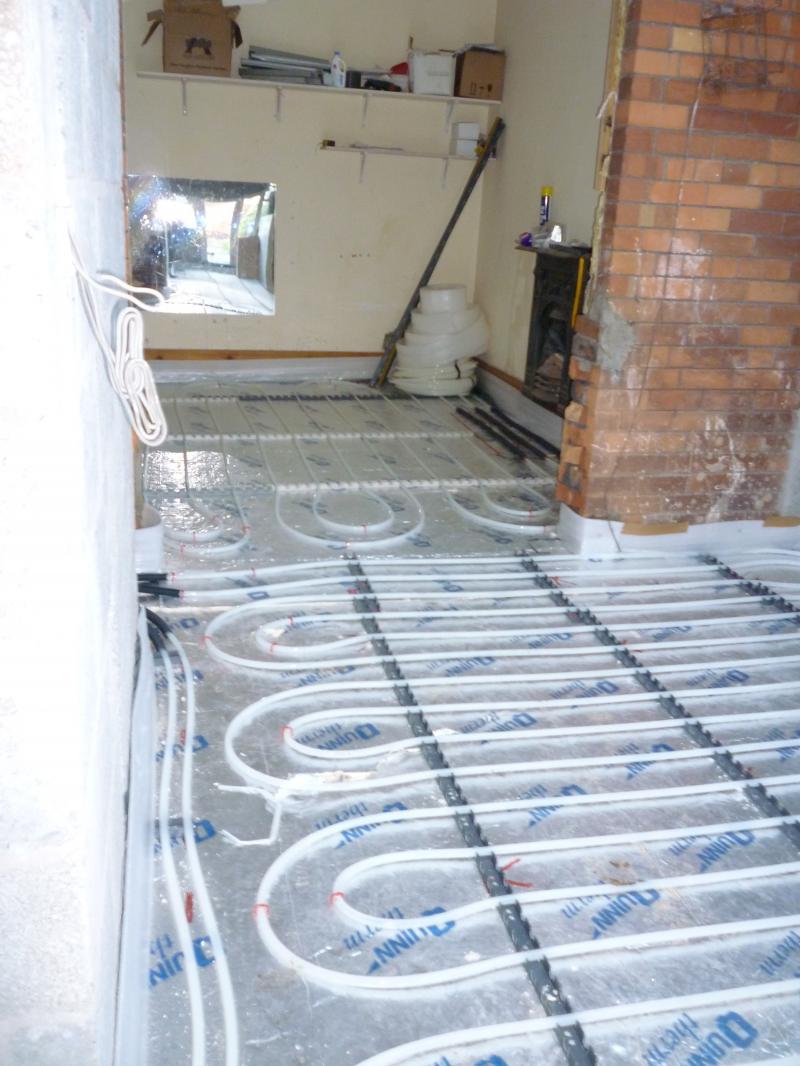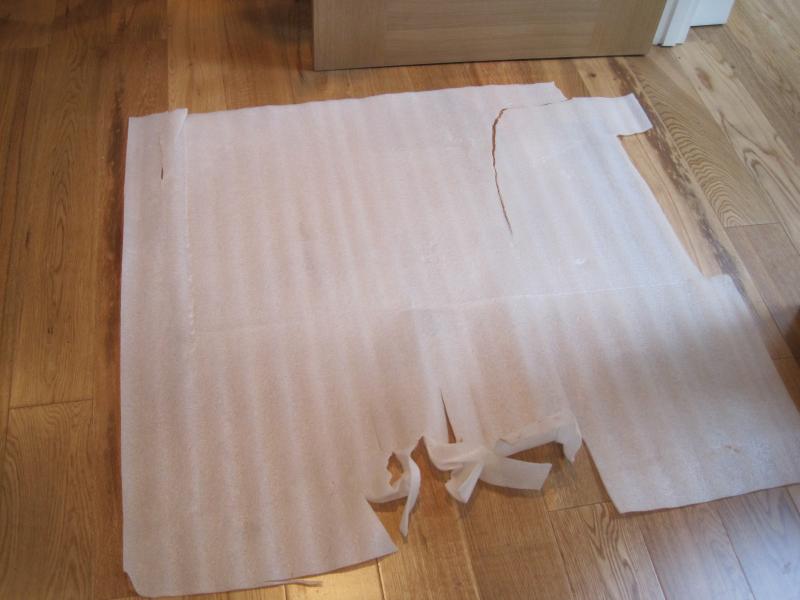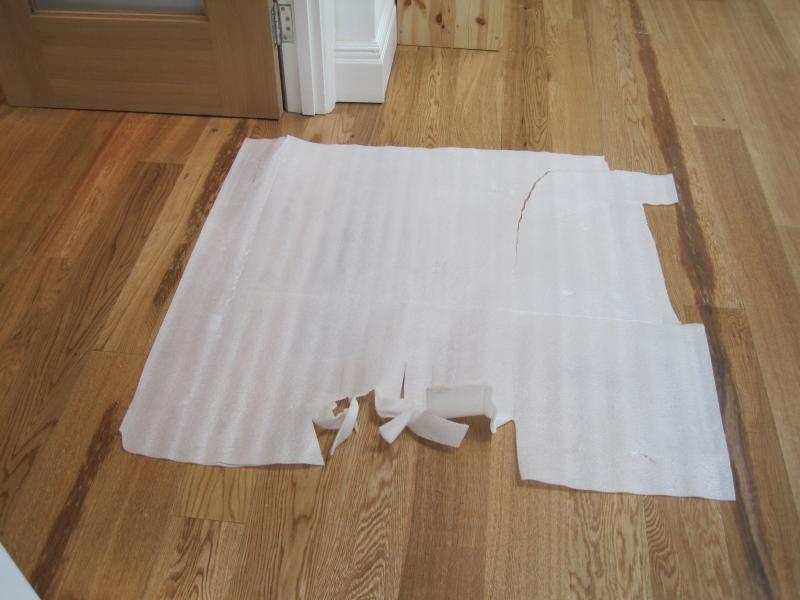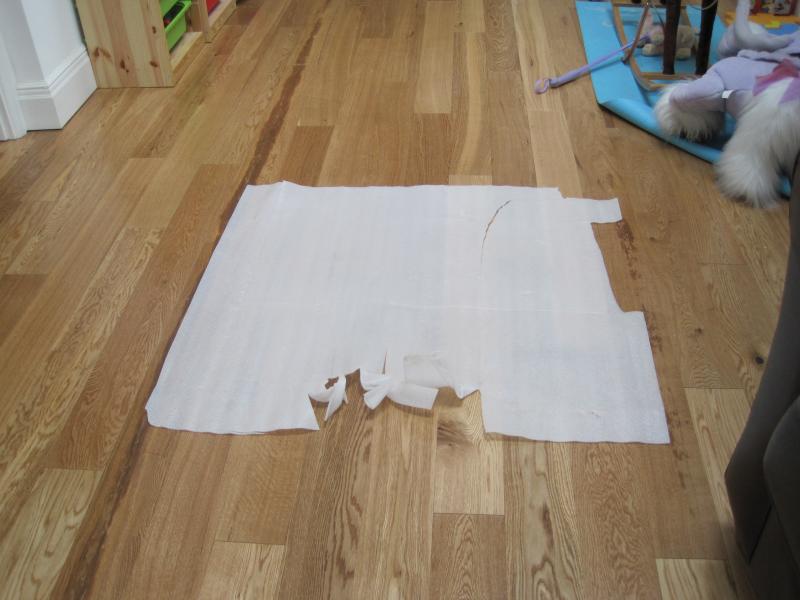- Joined
- 29 Jan 2010
- Messages
- 28
- Reaction score
- 1
- Country

Hi Everyone 
I've got a problem with some of my Engineered flooring planks swelling and turning dark brown. It looks like it's affecting planks that run lengthways above the plastic clip strips for my underfloor heating pipes.
I've added some pics in of the problem.
As part of a new extension and house refurb, I had a new concrete sub floor laid in September last year. I had underfloor heating installed on top of rigid insulation boards and then a floor screed poured at the end of October. The underfloor heating was then switched on at a low heat to dry the screed.
The engineered wood floor was laid on about the 8th of December. It is a click system that 'floats' on top of a very thin layer of white foam material, which I was informed was to stop the floor being noisey when walked on.
The affected boards stated to show swelling after we moved in mid January. They are now going dark brown as seen in the pictures. The area of discoluration is also pretty warm to the touch.
I've also included a pic of the underfloor heating installation. The plastic strip in the foreground is the one below the darkened area in the other pictures.
Any idea's what's going on here?
Many thanks, Andy
I've got a problem with some of my Engineered flooring planks swelling and turning dark brown. It looks like it's affecting planks that run lengthways above the plastic clip strips for my underfloor heating pipes.
I've added some pics in of the problem.
As part of a new extension and house refurb, I had a new concrete sub floor laid in September last year. I had underfloor heating installed on top of rigid insulation boards and then a floor screed poured at the end of October. The underfloor heating was then switched on at a low heat to dry the screed.
The engineered wood floor was laid on about the 8th of December. It is a click system that 'floats' on top of a very thin layer of white foam material, which I was informed was to stop the floor being noisey when walked on.
The affected boards stated to show swelling after we moved in mid January. They are now going dark brown as seen in the pictures. The area of discoluration is also pretty warm to the touch.
I've also included a pic of the underfloor heating installation. The plastic strip in the foreground is the one below the darkened area in the other pictures.
Any idea's what's going on here?
Many thanks, Andy

